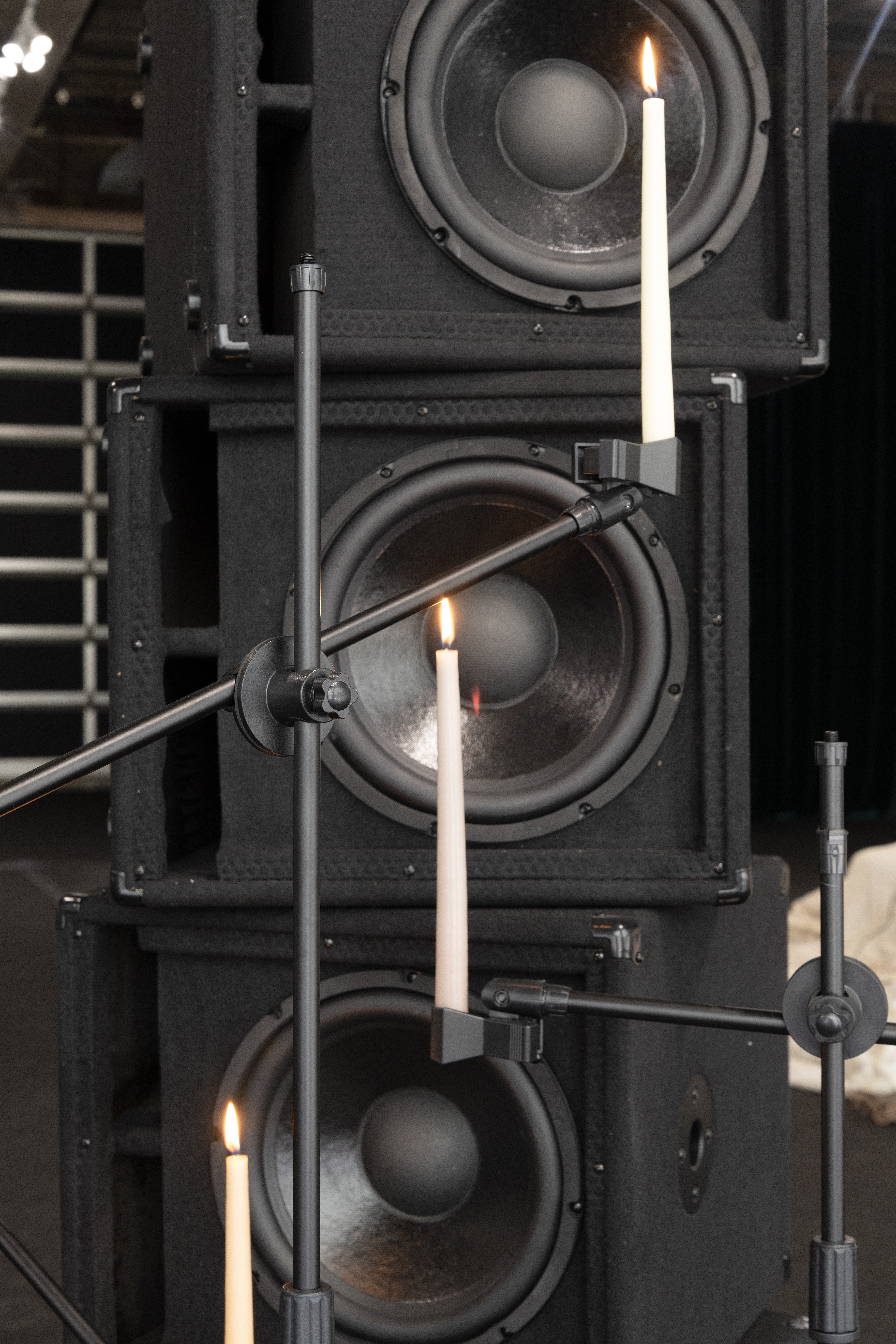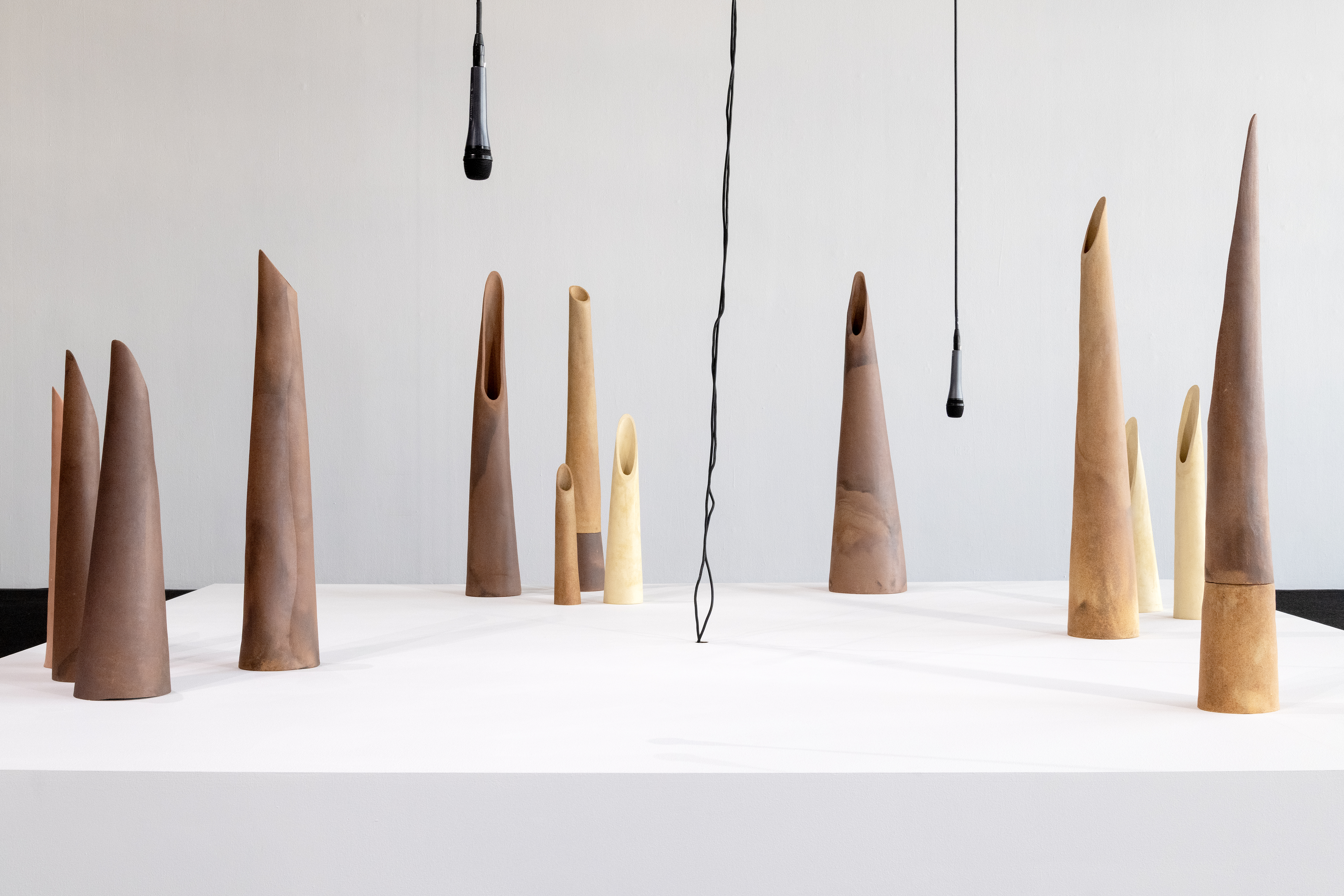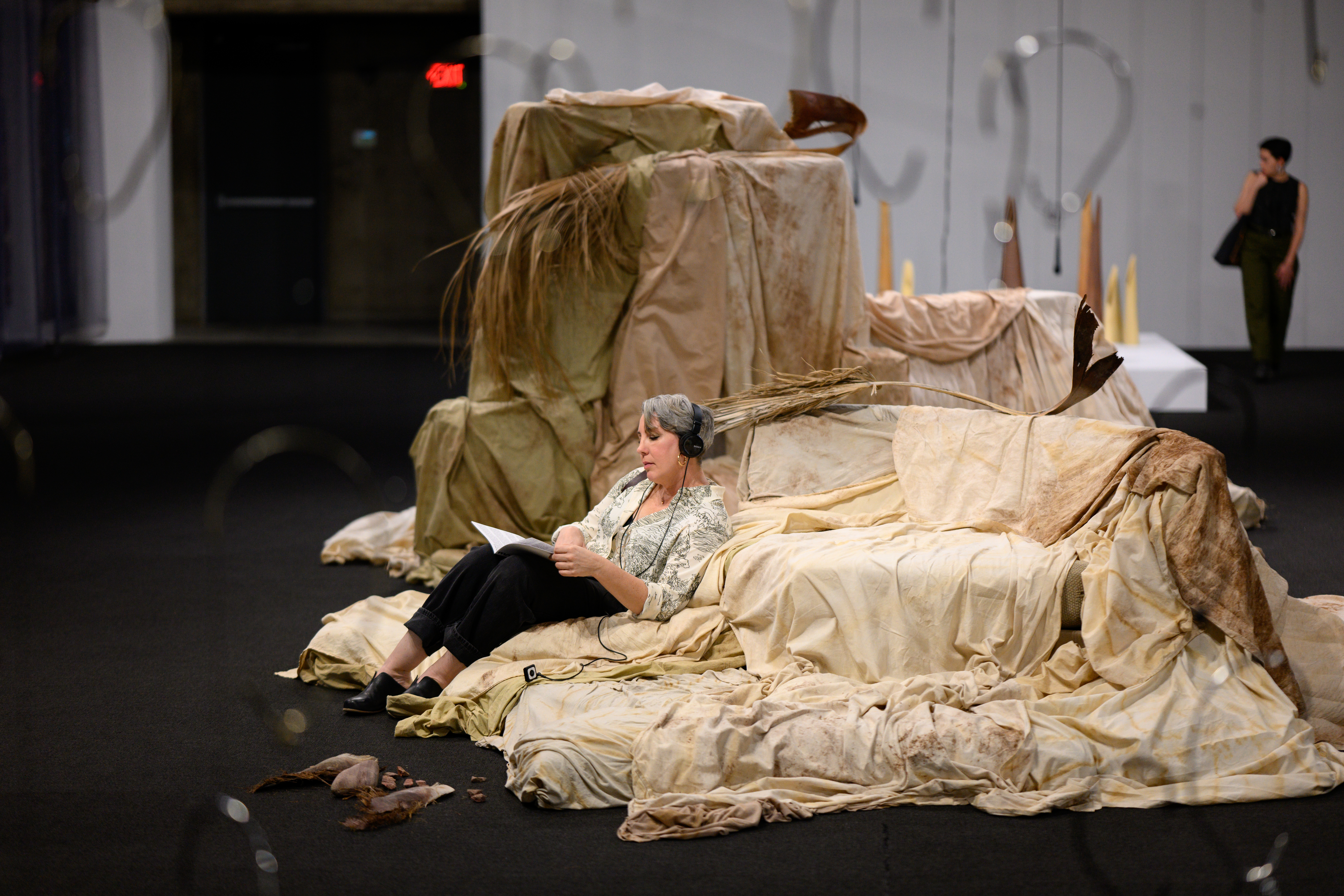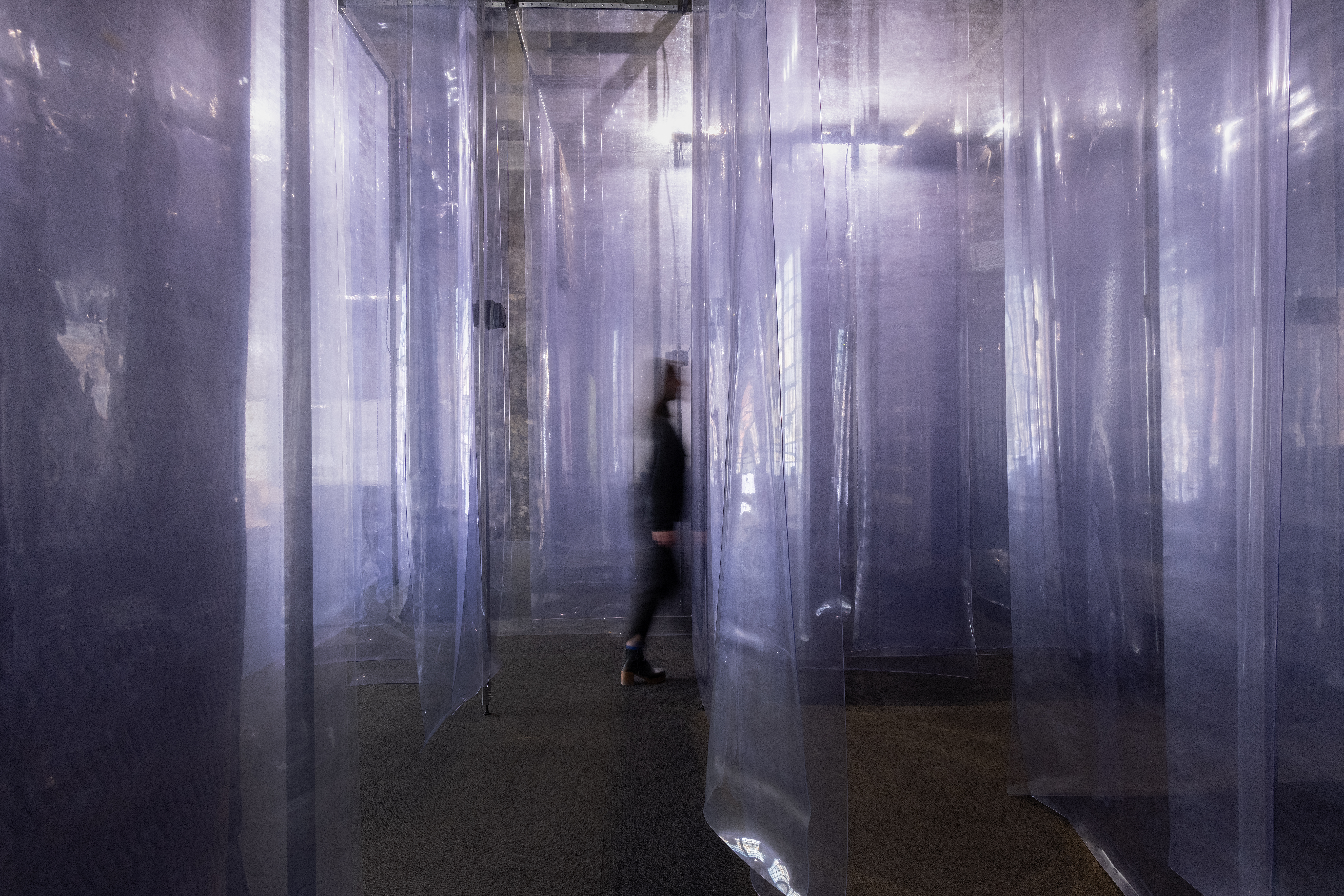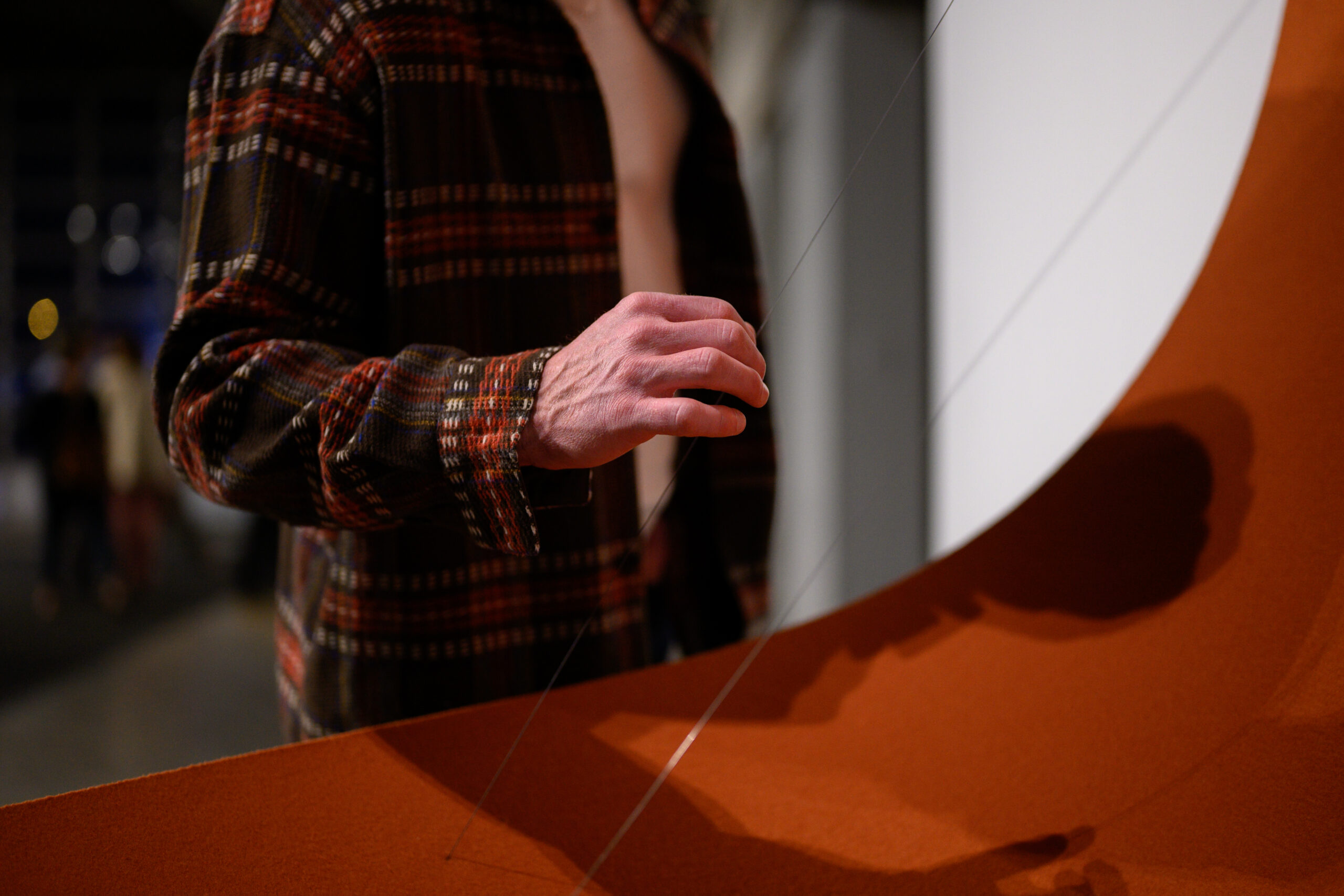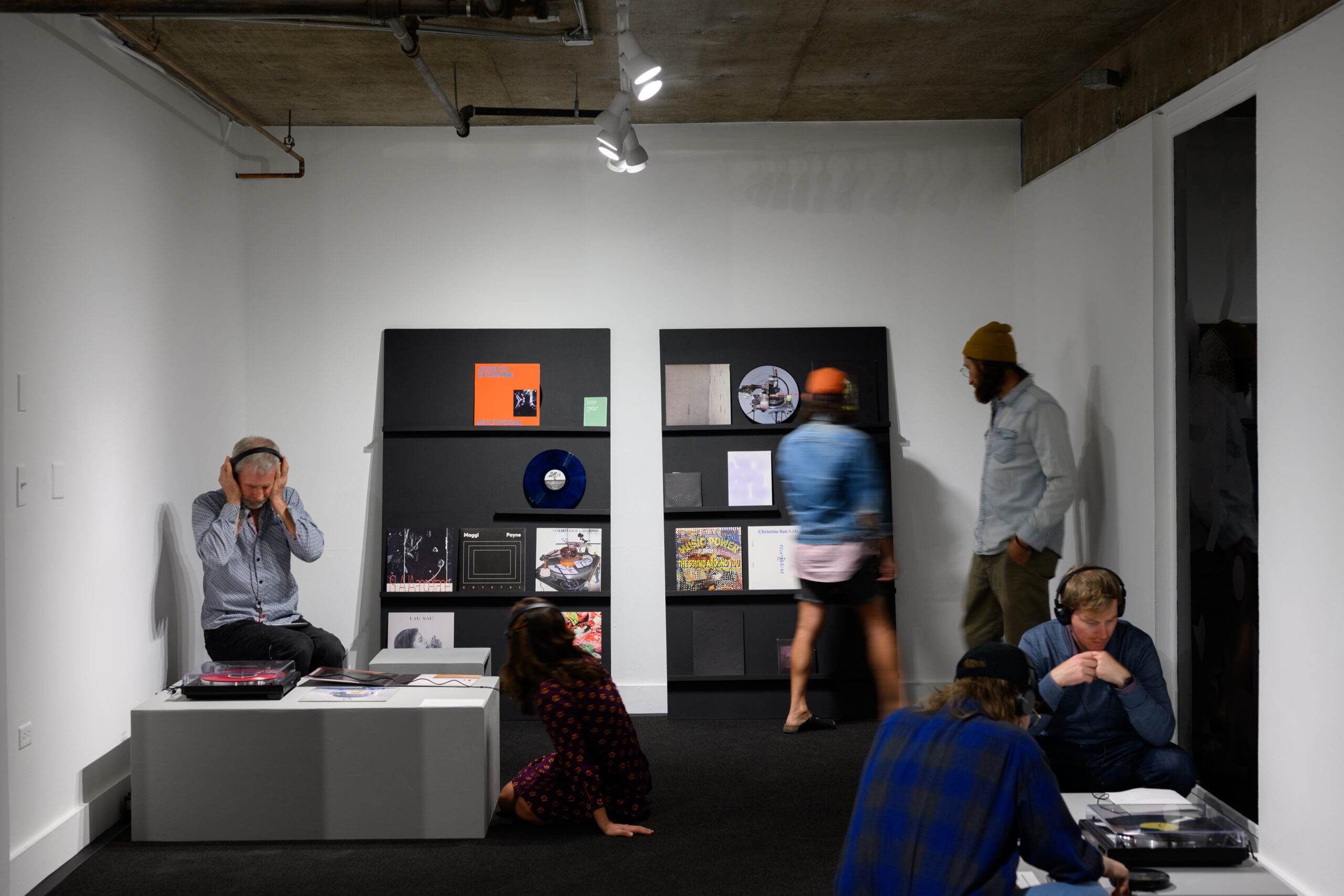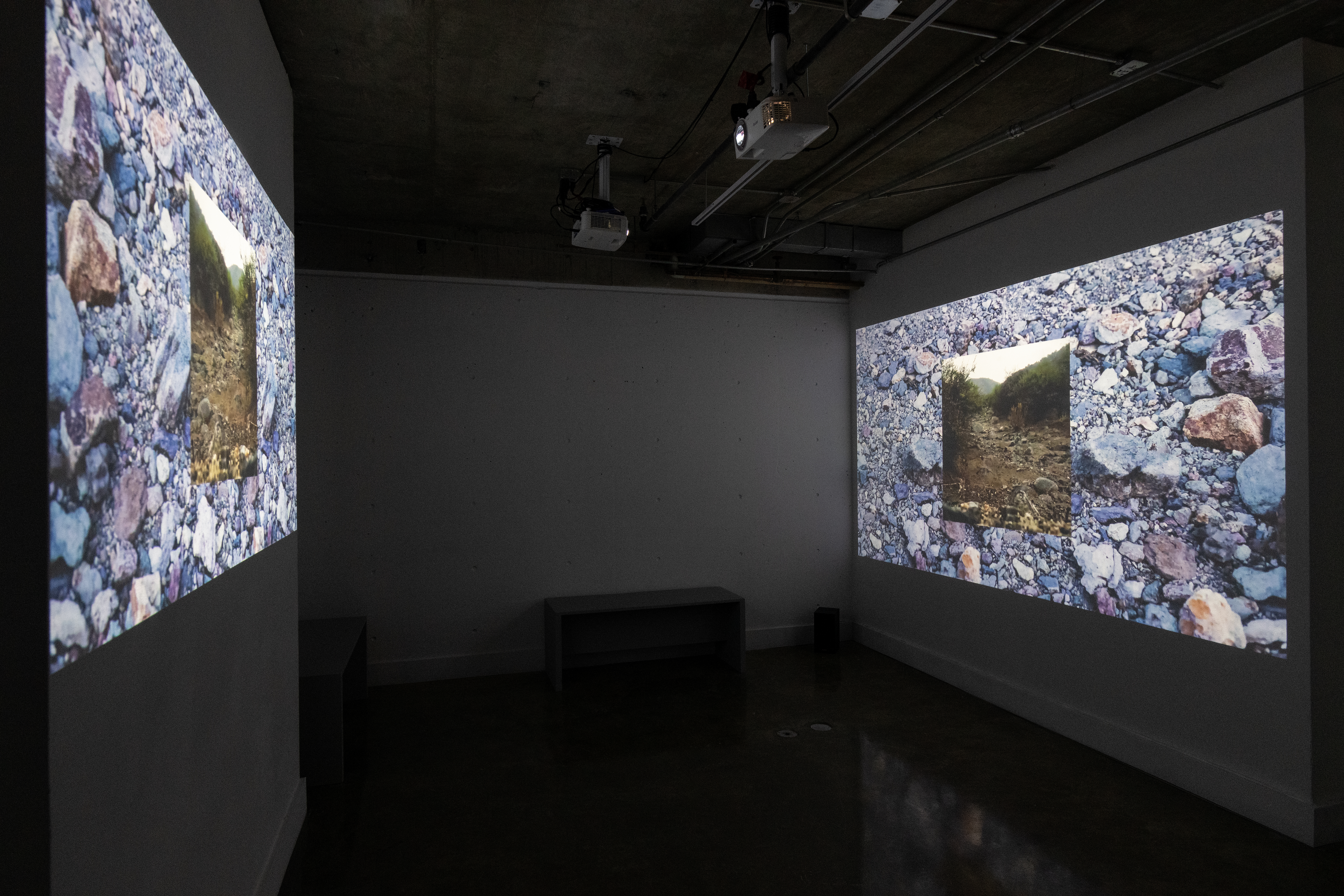Frequencies
Jacqueline Kiyomi Gork, Into/Loving/Against/Lost, installation detail, 2025 [photo: Maya Hawk; courtesy of Gork and MOCA, Tucson]
"Sound is presented as something not merely to be perceived but as something that perceives. A spectator. A participant. A protagonist."
Share:
Sound does not exist in a vacuum. In Frequencies, the spring exhibition at the Museum of Contemporary Art in Tucson, it emerges as a political agent, a survivalist, a history keeper, and a material force. Like water, sound presents here as a vital element of creation: primordial, relational, and resonant. The exhibition takes over and resonates throughout the museum’s entire ground floor. It includes a generous listening and reading room with experimental books, sound recordings, and vinyl-based sonic experiments that test the boundaries of the format. A heavy bass escorts you from the steps outside into the museum, ushering you inside to witness sound in the agitating flicker of a candle flame in Vivian Caccuri’s The Weeping Dancer (2022). Alongside that installation, Caccuri’s Cobertor de Orelhal (2021) is a hanging tapestry of (vaguely) ear-shaped metallic rings that look like triangles—the instruments—as if waiting to be activated, the potential of sound. The possibility of sound becomes the artwork itself.
Tatiana Echeverri Fernandez’s newly commissioned installation, Our Collective Becoming (2025) transforms the precious metal gold into a sentient narrator. Draped, dusty-looking bedsheets spread over seemingly soft, cushion-shaped forms. On them sit media-player headsets, inviting you to begrudgingly take a seat. From them, gold speaks in the first person, indignant and betrayed. It tells of the reverence it once commanded and the violence of its extraction. The work is tactile, raw: dried palm fronds and rocks are scattered throughout, a dried-up oasis. There’s a sense here of witnessing something sacred and defiled.
Viviann Caccuri, The Weeping Dancer, installation detail, 2025 [photo: Maya Hawk; courtesy of Caccuri and MOCA, Tuscon]
Ana Paula Santana’s newly commissioned sculpture Ellipses (2025) features two swinging microphones suspended by their cables, from motorized rotators on the Great Hall’s high ceiling. They swing past one another floating just above several hollow ceramic towers that resemble ant hills growing from an Earth at the beginning of time … except they’re on a clean white exhibition pedestal, displaced. As the microphones near one another, their screeches swell, only to fade as they drift apart again. They never quite touch. The high-pitched squealing seems sorrowful, like aspirations lost in desert air.
Anna Paula Santana, Ellipses, 2025 [photo: Maya Hawk; courtesy of Santana and MOCA, Tucson]
Tatiana Echeverri Fernandez, Frequencies, installation view, 2025 [photo: Julius Schlosburg; courtesy of Fernandez and MOCA, Tucson]
Jacqueline Kiyomi Gork’s corner installation Into/Loving/Against/Lost in the Loop (2023-ongoing) immediately calls to the body. A deep, throbbing bass and tactile vibration pull you in and evoke the feeling of walking toward a rave. Huge, thick, clear panels of vinyl form the ghostly walls of this see-through nightclub darkroom. Navigating the maze, a familiar tickle in the lower belly. Realtree wool blankets evoke hunting camouflage and drape over porous panels, softening the space. Speakers dot the space, blending deep techno pulses with feedback from the surrounding exhibition, transforming the gallery into a spatial echo chamber.
Jacqueline Kiyomi Gork, Into/Loving/Against/Lost, installation detail, 2025 [photo: Maya Hawk; courtesy of Gork and MOCA, Tucson]
The dominant impression in this first space is of sound as something self-contained, something that exists and acts without the human body to animate it—traces of sound, shadows of sound, in some places the ghost of sound. A dystopian aura clings to these materials: camouflage drapes, vinyl partitions, abandoned oases, insectile ceramic towers. Water trickles over bass and snare drums in one work, with barely enough flow to elicit a beat. Sound is presented as something not merely to be perceived but as something that perceives. A spectator. A participant. A protagonist. It is secondary to the body but also radically independent of it. A force that resists capture. A form that invites assembly, encounter, transformation.
Naama Tsabar, Work on Felt (Variation 31) Copper, installation detail, 2025 [photo: Julius Schlosburg; courtesy of Tsabar and MOCA, Tucson]
Frequencies, installation view, 2025 [photo: Julius Schlosburg; courtesy of MOCA, Tucson]
Throughout the exhibition, many of the pieces seem to mourn environmental violence and rape of the earth. Sound as witness. As potential healer. As voice unheard. It stands in for lost dreams, for what has been taken. Despite its ephemerality, sound persists. Long after structures crumble and systems collapse, sound will still ripple through the air. Here, the cacophony of competing sounds is deeply layered.
Phantoms haunt the exhibition. The ghost of the dying Santa Cruz River lingers in Karima Walker’s work, Graves for the Rain (2024–ongoing). The spectral presence of lost watershed routes drifts through Dry Spell (2025) by collective Alluvium. A rawness connects these works visually, sonically, and materially. Droning, buzzing, ominous: sound as testimony. Silence as complicity.
Frequencies doesn’t ask the body for stillness or deference. It invites movement. It insists on proximity. In doing so, it suggests that listening can be an act of resistance, that sound is not just a trace of action but a demand for one.
Nika Kaiser & Alluvium, Dryspell, 2025 [photo: Maya Hawk; courtesy of Alluvium and MOCA, Tucson]
Isis Awad is a curator, writer, and poet based in New York. She is the founding director of Executive Care*, an art organization at the service of Black trans and queer artists, and of artists of color, from performance and nightlife communities.
